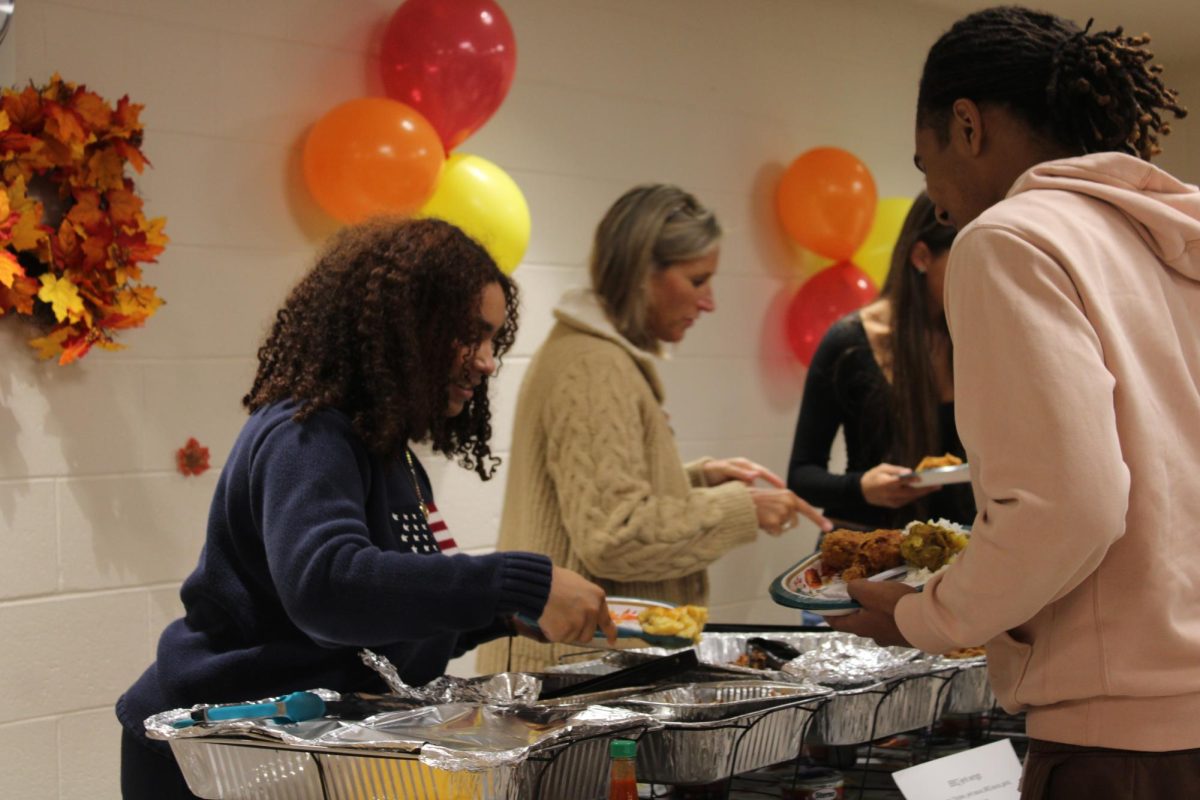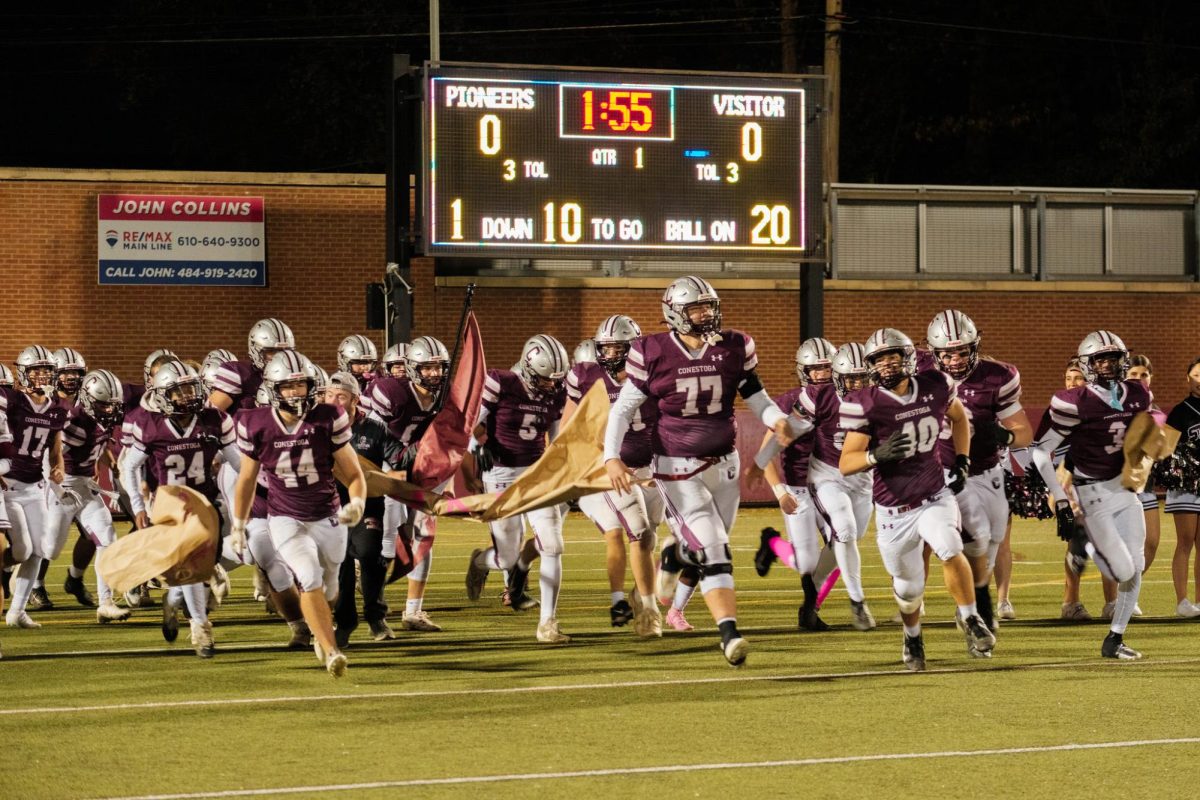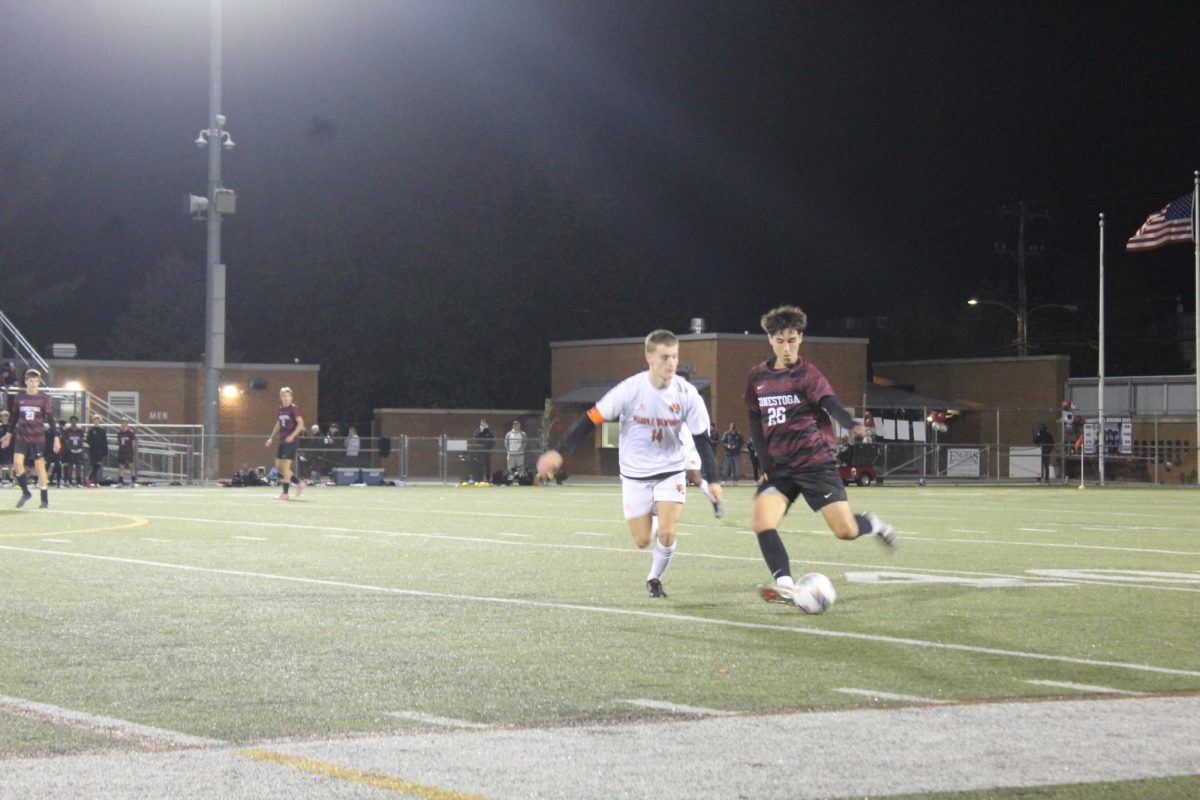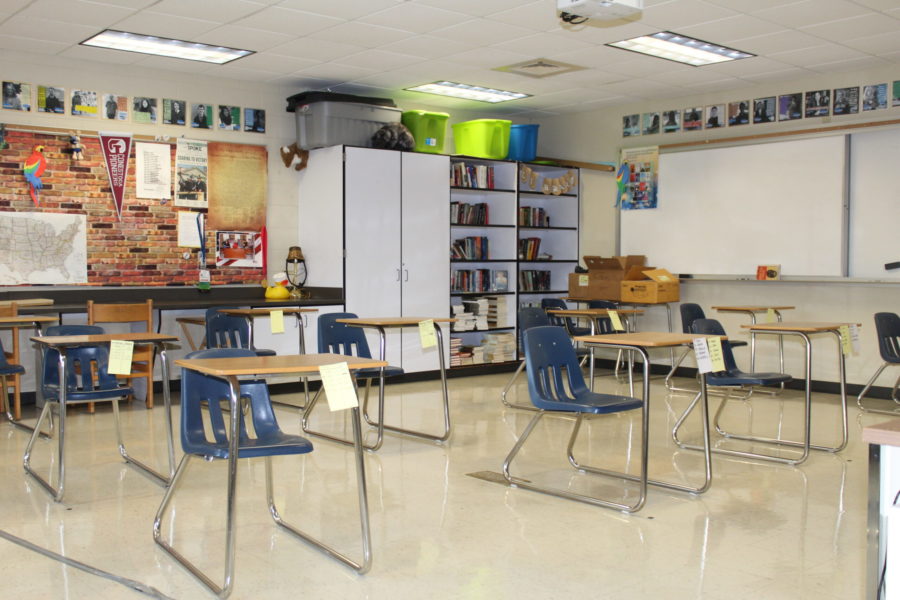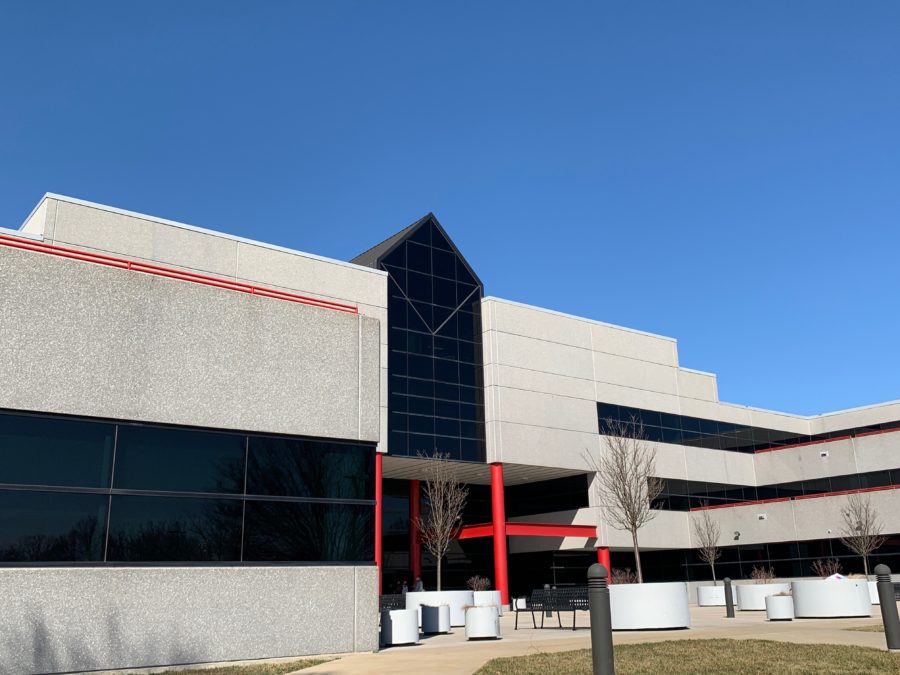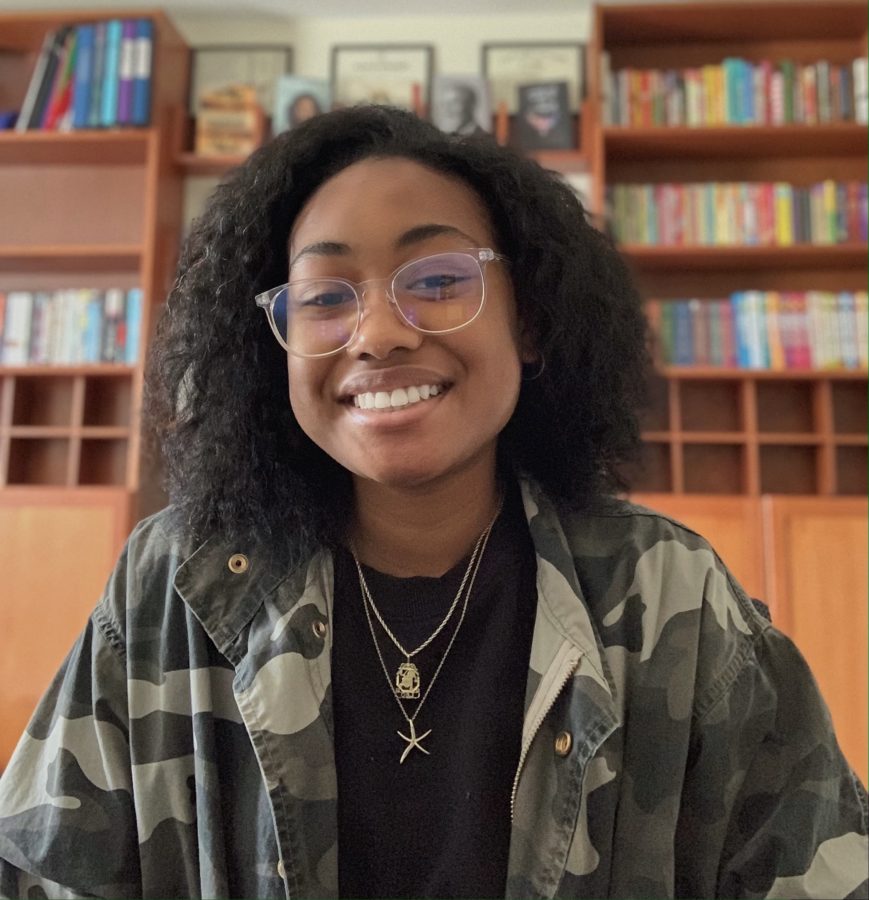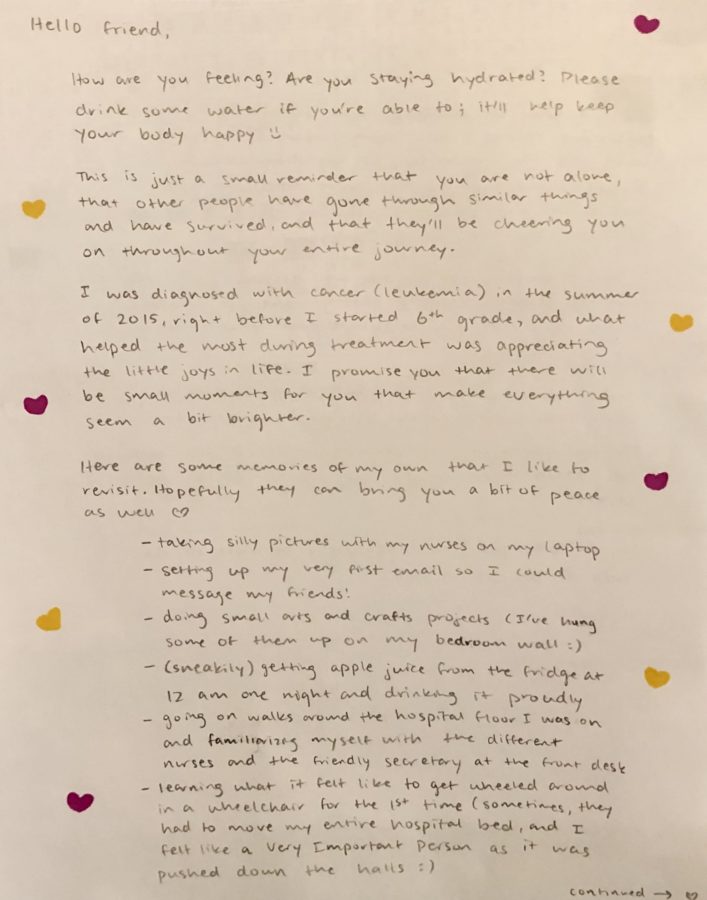By Ananya Kulkarni and Sophia Pan, Co-Editor in Chief and Co-Managing Editor
It’s Aug. 31 and the school is silent, but the air is thick with a quiet sort of anticipation. As students begin filing into the building from the bus circle, parking lot and main lobby, the buzz of greetings and conversation quickly grows deafening. Soon enough, the familiar tone of the bell plays over the loudspeaker, prompting approximately 2,400 students to rush to their homerooms for the first day of school.
This year, though, was a little different.
In response to the COVID-19 pandemic and the resulting Centers for Disease Control and Prevention (CDC) guidelines, TESD reopened its doors with a hybrid distance learning model on Oct. 12. This model allows for the partial reinstatement of in-person learning and has students with last names A-K attending school in-person on Mondays and Tuesdays and students with last names L-Z attending Thursdays and Fridays. All students attend school virtually on Wednesdays, which are split into a synchronous first half of the day and an asynchronous learning environment for the second half. This change, though, is only one of many measures implemented this year in order to mitigate the spread of the virus.
“I know the district has put together a great plan. We’ve put a lot of thought into this plan. We’ve put a lot of energy into providing the safest environment we possibly can for students returning,” Assistant Principal Dr. Anthony DiLella said.
In a July 29 meeting, the school board voted to implement a phased reopening plan beginning with all-virtual instruction in accordance with CDC guidelines. Over the summer, the district gave families a choice between electing to participate in a hybrid option, in which students would have classes in the building for two days a week, or to remain completely virtual. On Oct. 12, the district began a timeline of return, staggered by grade, for students that opted to attend in-person classes.
With roughly 30% of students remaining in a virtual learning environment according to DiLella and after a month of all students learning virtually, teachers have employed a variety of strategies to maintain student engagement from home.
“Some things work better in person, so we had to figure out ways to modify lessons to make them more accessible and relatable in the online environment. While doing that, it is even more important now to create and cultivate a sense of classroom community,” said social studies teacher Blake Stabert. “Even though we are remote in distance learning, we are still learning together as a class and as a school community. Much of my planning so far has been figuring out ways to help the students connect with one another and help them get to know me as their teacher. A big part of that is creating a classroom environment that isn’t bound by the physical space of the classroom, but defined by enthusiasm and joy of learning.”
As students have begun to adapt to the synchronous virtual learning environment, DiLella notes that the goal of the shift back to synchronous learning was to reinstate a sense of regularity in the school day.
“When we were doing asynchronous in the spring, one of the things that I think kids struggled with was there wasn’t a schedule,” DiLella said. “I think it was really important to provide a level of normalcy for students, even though they were virtual so that they could get up every day and they could access school in an environment that was as close to as it was before the pandemic.”
The shift to synchronous virtual learning brought with it a unique set of benefits and challenges for students.
“I feel like the workload is less than it would be if it was real-life class, but it’s stressful to have to worry about everything, and like, if my computer shuts down or something, that’s stressful because it’s live classes so I’m actively missing something,” senior Ansh Goyal, who chose to remain virtual, said.
Block Scheduling
One of the biggest changes this year has been the shift from the traditional eight-period schedule to an alternating block schedule, with students attending four periods a day.
“One of the reasons we (shifted to block scheduling) is we didn’t want students bouncing around to eight periods in one day, having eight different teams links,” DiLella said. “We’re trying to limit a little bit of the screen time for kids.”
Classes, which lasted 85 minutes each during all-virtual learning and last 81 minutes each during hybrid learning, rotate on an expanded 12-day cycle, with periods 1, 3, 5 and 7 taking place on garnet days and periods 2, 4, 6 and 8 taking place on gray days. The transition time between classes was lengthened to 12 minutes pre-hybrid learning and then shortened to 10 minutes for hybrid learning and 5 minutes for Wednesdays starting the week of Oct. 12.
Since the block scheduling alternates between two groups of four classes, classes that previously met every day now meet every other day, which Goyal views as a plus.
“I don’t like that the classes are so long, but I feel like the block scheduling is kind of nice,” Goyal said, “because you get an extra day to do homework because you’ll have the same class every other day, so it gives you a little extra time.”
Consecutive class time of 80+ minutes, as opposed to 41 minutes, has taken a toll, though, on students like sophomore Anish Garimidi, who opted into hybrid schooling.
“I am not focusing as well,” Garimidi said. “I don’t know if I’m more fatigued than usual, but it feels like that.”
Screen fatigue is not an uncommon problem, but teachers have been making adjustments to curriculum and planning for integrating breaks as a result of the longer and less frequent classes.
“The breaks are really good for me because they allow me to energize my mind and let me refocus on what my teachers are presenting,” Garimidi said.
On the other hand, freshman Samantha Lara, who is doing the hybrid option, has had some difficulty utilizing the breaks she has been given.
“I feel like (with) the breaks, I don’t really know what to do with them,” Lara said. “They give us some five-minute screen breaks: I get off and then use the bathroom, and then they’re already restarting, so it’s kind of hard to go outside or something.”
Grading Policy
To alleviate additional stressors in the midst of the shutdown, the school adopted a new grading policy that will be implemented for the entirety of the 2020-2021 school year regardless of the changing status of the pandemic. The most notable differences are a shift to quarterless grading, a system in which students receive grades on a yearly basis rather than a quartered marking period basis; the introduction of a 55% minimum that a student can receive on any assignment or assessment; and the removal of both midterm and final exams.
“The idea there (with quarterless grading) is looking at the system to allow the system really to work on behalf of the students in its best regard and allow them the opportunity to show the growth of the grade over the period of time,” Assistant Principal Dr. Patrick Boyle said.
According to DiLella, the district implemented the 55% assignment floor alongside quarterless grading to help alleviate stress for students.
“That 55% is just kind of a pullover from what we had before. It’s trying not to put a student in such a hole that they can’t dig themselves out of,” DiLella said. “What’s the point of giving a student a zero in a marking period? What a zero says to a student is, ‘You’re never going to get out of this hole.’ A 55 at least says, ‘Okay, you didn’t do so well, but let’s keep going.’ I think it gives that student a little bit of a positive motivation to keep pushing forward because getting a low grade in a marking period can be extremely demoralizing to a kid.”
DiLella notes a similar intention behind the removal of midterms and finals.
“The question I’ve asked is, ‘Does that midterm accurately reflect the content knowledge that they’ve absorbed from that course?’ And I can tell you, in my experience, normally, the answer is no,” DiLella said. “We wanted to look at a system that we could put in place during this pandemic that pulls things from university and real world but also put students in the best position to succeed and says to us, yes, this student has a mastery of the content knowledge in this course, enough mastery to move on to the next level of this course the following year.”
Though quarterless grading allows for a more complete picture of a student’s growth over the course of the year, it does not come without some drawbacks. Garimidi, for example, worries that the new grading system leaves his grades perpetually open to fluctuations due to a single low test score.
“The mentality of a reset every four months or like three months was just really nice because then, like, oh, it’s just one bad test, it’ll literally be gone in like two months, and then I can just work really hard to bring up my average,” Garimidi said, “but then now, that one bad test is stuck with me forever, and I feel like that will add more stress as we go on as grades are put in.”
Access to Materials
Following the shutdown beginning March 13, administrators worked tirelessly to equip every student in the district with access to technology.
“We work with the families, we work with the students, we work with the providers to make sure our students do have access (in) those situations, and if we have information that a student is struggling with a particular situation, we have a full staff of people who work with the family, the students, and the providers of the internet or any kind of technology to make sure the student has access and the opportunity to use those devices and the internet as well,” Boyle said, “but I know our staff has worked very, very hard to make sure that there’s no one left behind and no one is feeling left out in any kind of situation whatsoever.”
In order to combat inevitable technology issues that accompany a complete shift to a virtual environment, the district created a LAUNCH course on Schoology with guidelines on how to navigate various school-employed websites and applications. The Tech Deck, Conestoga’s IT help desk, also moved online to the helpdesk.tesd.net website, which allows students to file a help desk ticket if problems arise.
As the beginning of the school year approached, the school set drop-off and pickup times for textbooks and other necessary school materials. In the week of Aug. 17, students dropped off books and materials from the previous school year at a given time staggered alphabetically by last name, with each day slotted for a specific grade. This routine was repeated in the week of Aug. 24 for the pickup of materials, including textbooks and take-home material kits for certain electives.
Hybrid Model
Though Lara started taking high school classes back in August, she first set foot in the building on Oct. 15, only able to attend her freshman orientation well into the fall of her first year at ’Stoga.
“It (my first day doing in-person school) was pretty good! It was definitely very different, but I feel it helped me focus a lot better than I can at home,” Lara said. “I am pretty excited (to be back) since I feel like it felt more like I was starting school than it actually did on the first day online.”
All things considered, while this year may look a little different than usual, the Conestoga community is working hard to bring back students safely and with the implementation of the hybrid learning model, hopefully, keep them in building as long it remains possible.
“I like the idea of being part of a community that looks after each other and takes care of each other. This makes it so much more difficult,” Boyle said, “I just wish we weren’t in the situation we’re in right now so we could be back together in the school because Conestoga is a special place. I don’t know of anyone who doesn’t feel that way. Many of us have been to other schools, and because of the students and the staff in this building, it makes it very special, and not having all the staff and students in here, it’s still special, but you don’t have that connection right now.”






